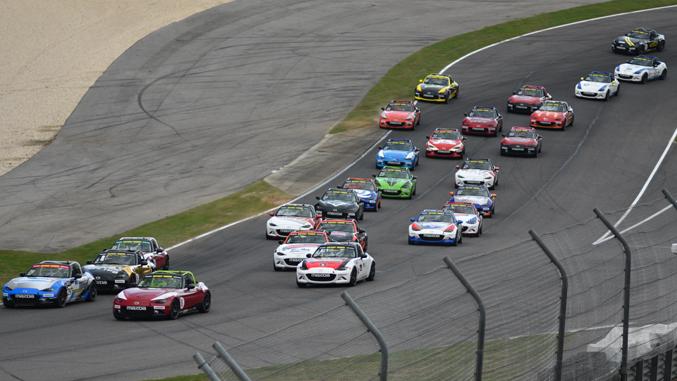Speed Secrets: The “Change of Speed” Problem

One of the most common errors I see drivers make is what I call the Change of Speed Problem.
The key point is that the change in speed through a corner may be causing the car to make you believe you are driving at the limit when, in reality, you have actually created an artificially low limit. Let me use an example to demonstrate what I mean.
Let’s assume you can enter Turn 1 of our imaginary track at 80 MPH. That is, at the point you initially turn the steering wheel at the turn-in point you are travelling at 80 MPH; and, that you can carry or maintain that speed to around the apex, where you begin to accelerate. Throughout this corner the car is at its very limit of traction – one-half of a MPH more and the car would begin to slide too much, causing it to either scrub off speed or start to spin.
Now, what would happen if you entered the corner at less than 80 MPH? What often happens is this: You slow the car down to, say, 78 MPH at the turn-in point. As you enter the corner, your traction sensing tells you that the car is not at the very limit – there is still some traction to be used. So, your right foot pushes down on the throttle pedal and the car accelerates. Understand that this happens entirely at the subconscious level – you are certainly not consciously thinking about doing this; it is just happening.
Although entering the corner at 78 MPH is not driving at the limit, it’s is not far off. The tires are close to being at their limit of traction, just before they break away and begin to slide too much. So, as you begin accelerating, you are now asking the rear tires (in a rear-drive car) to take on a bigger task. Remember, you can only ever get 100 percent out of the tires, nothing more. If you are using 99 percent of the rear tires’ traction for cornering at 78 MPH, and then begin acceleration, there is a very good chance you will ask for more than 1 percent traction for accelerating. In fact, there is a good chance that with your right foot squeezing down on the throttle, you will be asking for more like 5 or 10 percent of the traction for acceleration. The result is the rear tires go beyond their limit, and the car begins to oversteer, if ever so slightly.
Your read on the situation at this point is that you are driving at, or maybe even slightly beyond the limit. And, you are only at somewhere between 78 and 80 MPH, which is not as fast as you could be. You think you are at the limit, and you are right to some extent. But, you have created this artificially low limit.
You see, it is the change of speed from 78 to 80 MPH that caused the tires to barely exceed the traction limit – and create an artificially low limit. If you had entered the corner at 80 MPH, your traction sensing would have told you that you are at the limit, you would have squeezed on the throttle appropriately, enabling you to accelerate out of the corner on the limit.
A greater than ideal change in speed also causes excessive weight transfer – it unbalances the car more than necessary. When your traction sensing signals there is more speed required to get the tires to their limit, you tromp on the throttle and weight is transferred to the rear. Yes, this may be a good thing to help give the rear tires more grip to handle the increased demand for acceleration traction, but it may also cause excessive understeer. The ultimate result is the same: your traction sensing then feels that the front tires are beyond the limit, and you don’t go any faster (maybe even slow down).
This is why your corner entry speed is so critical. If you enter a corner too slow (below the limit), and then try to make up for it by accelerating, you may create a limit that is not as high as if you entered the corner at the ideal speed. And, your corner entry speed is one of the reasons your speed sensing skills are so important. Because without great speed sensing skills, you will not be able to accurately and consistently gauge – and therefore drive – the correct speed when entering the turns.
Truly great race car drivers have the ability to adjust their entry speed to within one-half a MPH, consistently, of the ideal corner entry speed for every corner and every lap. Lesser drivers’ corner entry speed may vary from lap-to-lap anywhere from one to five or more MPH. Until your speed sensing abilities are finely tuned and consistent, you will never know for sure what technique (or car set-up) worked and what didn’t work. This is why Speed Sensing exercises are so critical (more about them in another article…).
Speed Secret: The less change in speed through a corner, the faster you will be.
Ross Bentley
For more information about Ross’s tips, coaching, eCourses, newsletter, Virtual Track Walk videos, and other resources to help you drive at your best, go to www.SpeedSecrets.com


















